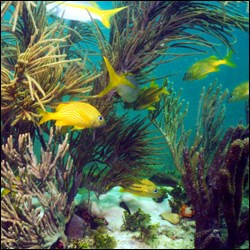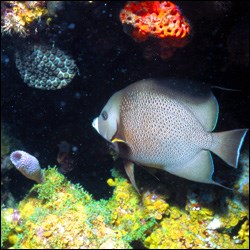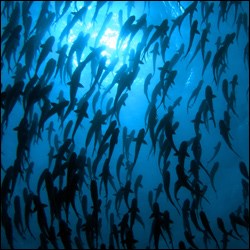
The colorful reef fishes that lure snorkelers and divers to Dry Tortugas National Park are as vivid as the coral reefs they inhabit. A seemingly endless variety of fish species dart in and out among the nooks and crannies of the reefs, their forms camouflaged by the shadowy play of light and darkness. Predators are easily confused by the flicks of cryptic color that disappear as quickly as they appear, or change direction midstream seemingly without notice and for no apparent reason. Complicating the chase, many species of fish have markings that make it difficult to tell if the fish are swimming forward or backward. 

Fish aggregate together for social reasons, foraging success, and protection from predators. An unstructured aggregation of fish may consist of multiple species randomly gathered together near a local resource, such as food or a nesting site. A group of fish that stays together for social reasons is said to be shoaling. Although fish that are shoaling swim independently of each other and can face in any direction, they stay close to each other and form a social group. When a group of shoaling fish becomes more organized and synchronizes to swim together in the same direction and at the same speed in a coordinated manner, they are said to be schooling. Schooling fish are generally of the same species, age, and size. A school moves with the fish evenly spaced and can undertake complicated maneuvers, as if the school itself was one discrete organism with its own mind. |
Last updated: August 10, 2022
